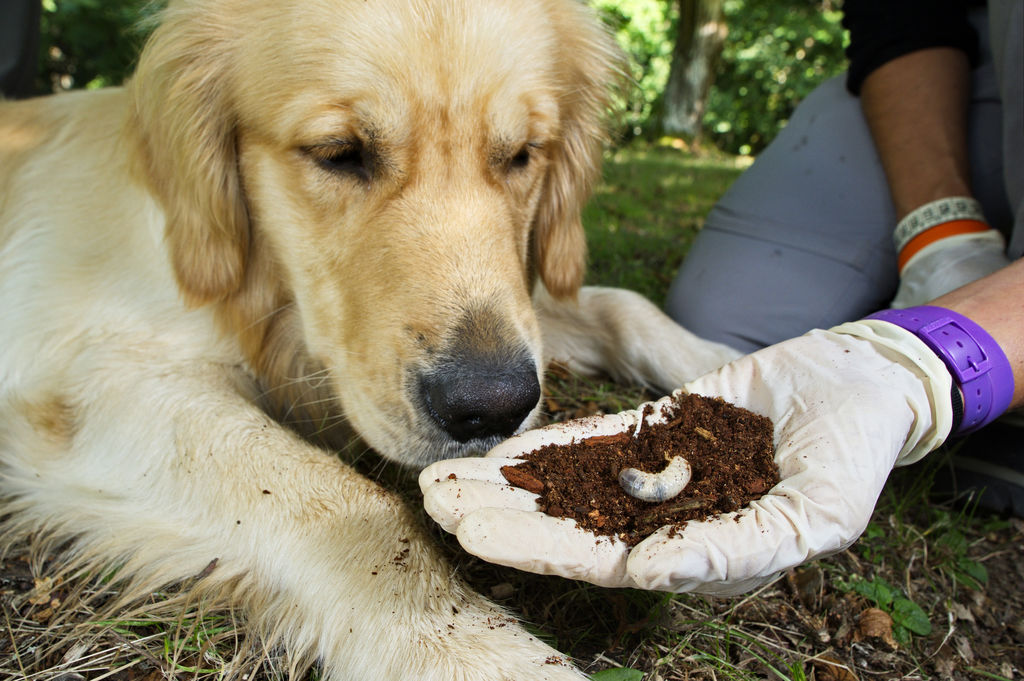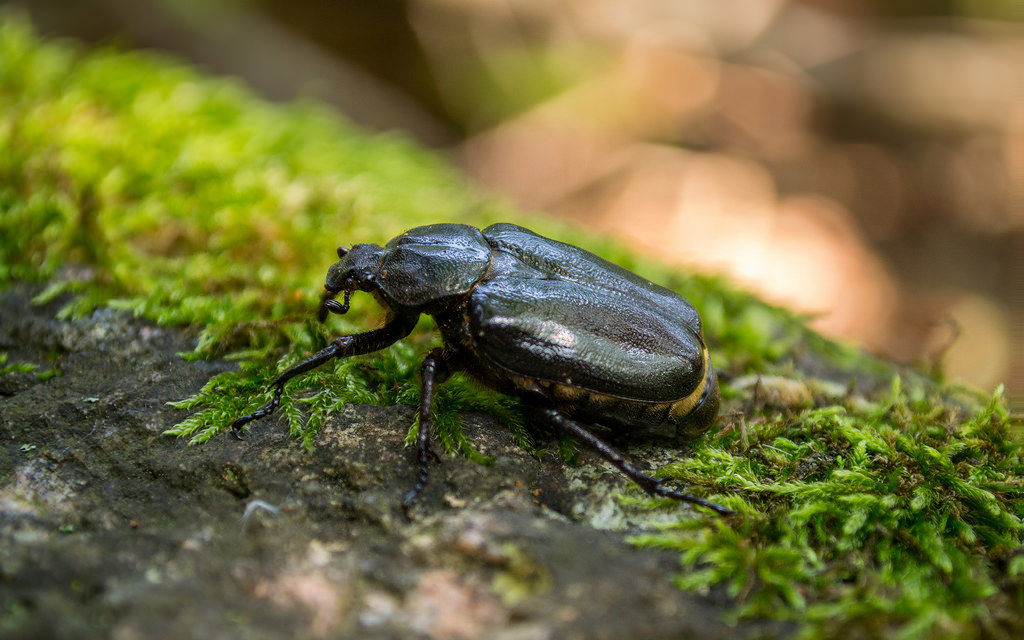
The Best Friend of the Hermit Beetle
Teseo, the golden retriever trained under the guidance of Paolo Audisio (Department of Biology and Biotechnology “C. Darwin”, Sapienza University of Rome), has proved to be an useful tool to detect the larvae of Osmoderma eremita, a species ranked, within the European Project MIPP (Monitoring of Insects with Public Participation:http://lifemipp.eu/mipp/new/index.jsp), as "Near Threatened" and now rare in most European countries.
The main aim of the project - started at the end of 2012 and ended on 30 September 2017 - was to develop standard and non-invasive methods for the monitoring of some species of saproxylic beetles, among which Osmoderma eremita.
Among the associated beneficiaries of the project, Sapienza University has followed the training of Osmodog, a Conservation Detection Dog, which detect the larvae of Osmoderma eremita in their habitat, i.e., inside cavities of old and large trees (oaks, chestnut trees, willows, beeches, poplars, etc.), a very limited and constantly reduced ecological niche. Since presence of adult and larvae of the hermit beetle physically and chemically influences the cavities of the trees, also in favor of other saproxylic beetles, it can be considered an “umbrella species” and an indicator of the quality of the entire saproxylic community (i.e. the whole group of species linked in one stage of their life cycle to the dry or rotting wood of the trees).
The adult males of the hermit beetle produce a particular pherormone so intense that it is also perceived by humans. This particular feature was exploited to predict the monitoring of the species through the use of a dog "targeted" to the perception and to the specific recognition of the odor emitted by the beetle, although it was then only applied to the identification of its larval stages.
At the end of the training period, Osmodog demonstrated an excellent ability to detect the larvae of the target species; from the tests carried out with his trainer and handler Fabio Mosconi, Teseo showed an accuracy (the total percentage of correct reports) of about 92%. The results obtained from the tests were published in the international scientific journal Nature Conservation.
"The use of the dog - commented Audisio - turned out to be an extremely functional tool given the very short working times required for the analysis of single trees; moreover, compared to other protocols commonly used for monitoring, it is a method that reduces to zero the impact on the target species because the use of the smell completely prevents contact with the specimens and therefore avoids any kind of disturbance".
The MIPP project (Monitoring of Insects with Public Participation) is a project of the Comando Unità per la Tutela Forestale, Ambientale e Agroalimentare Carabinieri, co-funded by the European Commission under the LIFE + program (LIFE11 NAT / IT / 000252), the duration of 5 years, started at the end of 2012 and just ended on September 30th, 2017. The associated beneficiaries of the project were Sapienza University of Rome, University of Roma Tre, Italian Ministry of Environment and Protection of Land and Sea, Lombardy Region and Council for Research in Agriculture and the Analysis of Agricultural Economics - DC Florence.
References:
Training of a dog for the monitoring of Osmoderma eremita - Fabio Mosconi, Alessandro Campanaro, Giuseppe Maria Carpaneto, Stefano Chiari, Sönke Hardersen, Emiliano Mancini, Emanuela Maurizi, Simone Sabatelli, Agnese Zauli, Franco Mason, Paolo Audisio - Nature Conservation 20: 237-264. https://doi.org/10.3897/natureconservation.20.12688



